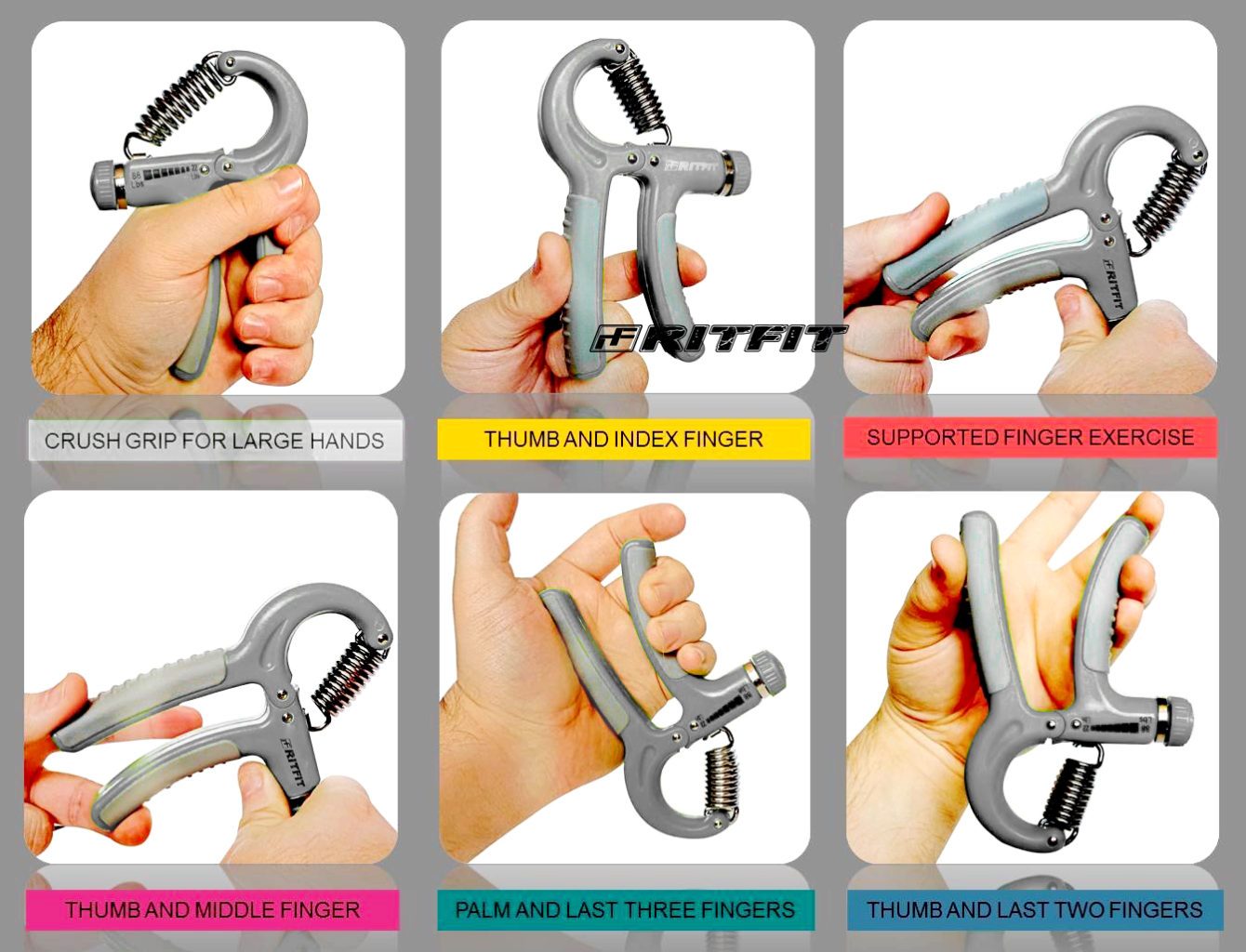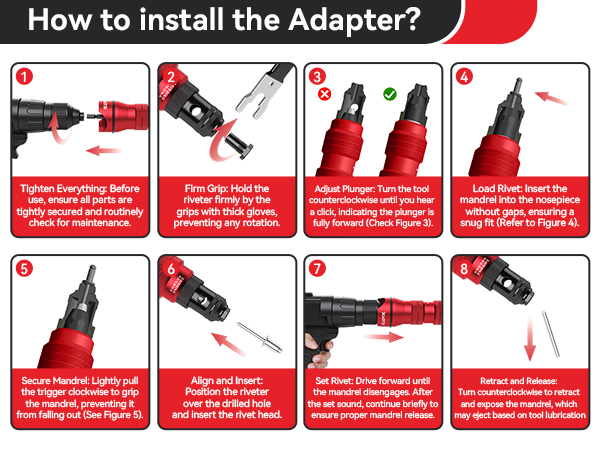As an Amazon Associate, I earn from qualifying purchases.
Proper grip on hand tools is essential for safety and efficiency. It prevents accidents and ensures precision in tasks.
Using hand tools correctly can make a big difference in your work. A firm, secure grip reduces the risk of injury and boosts productivity. Many people overlook the importance of how they hold their tools, leading to mistakes and mishaps.
In this blog post, we’ll explore the steps to ensure a proper grip on hand tools. Whether you’re a professional or a DIY enthusiast, these tips will help you handle your tools with confidence and skill. Let’s dive into the details and improve your grip on hand tools for better performance and safety.

Importance Of Proper Grip
Having a proper grip on hand tools is essential for both safety and efficiency. It can prevent accidents and improve the quality of work. Understanding how to grip tools correctly can make a significant difference in your daily tasks.
Safety Benefits
A proper grip reduces the risk of slips and falls. This is crucial when working with sharp or heavy tools. Firm control over tools prevents them from slipping out of your hands. This reduces the chance of injuries.
Additionally, a good grip can help prevent hand fatigue. This is particularly important during long tasks. Less fatigue means fewer mistakes, which leads to safer working conditions.
Efficiency And Precision
With a proper grip, you can work more efficiently. Tasks are completed faster and with less effort. This is because you have better control over the tool.
Moreover, a good grip enhances precision. This is vital for tasks that require accuracy. For example, cutting, drilling, or screwing. A steady hand ensures that you perform these tasks accurately.
To achieve a proper grip, follow these steps:
- Ensure your hand is dry and clean.
- Select the right size tool for your hand.
- Use tools with ergonomic handles.
- Hold the tool firmly but not too tight.
By following these steps, you can improve your grip. This will lead to safer and more efficient work.
Choosing The Right Tool
Proper grip on hand tools starts with choosing the right tool. A well-chosen tool fits comfortably and reduces strain. This ensures safe and efficient work.
Tool Size And Weight
The size and weight of a tool greatly affect your grip. Tools that are too large or too small can cause discomfort. They can also lead to accidents.
Select a tool that fits your hand size. This allows for a secure grip. Lightweight tools are often easier to handle. But, ensure they are sturdy enough for the task.
A table can help illustrate the ideal tool size and weight:
| Hand Size | Tool Size | Tool Weight |
|---|---|---|
| Small | Small | Light |
| Medium | Medium | Moderate |
| Large | Large | Heavy |
Ergonomic Design
Ergonomic tools are designed to fit the natural grip of your hand. This reduces fatigue and improves efficiency. Look for features like cushioned handles. Non-slip grips are also important.
These features make tools more comfortable to use. They also help prevent injuries. For long tasks, ergonomic tools are a better choice.
Preparing Your Hands
Ensuring a proper grip on hand tools is essential for safety and efficiency. Before using any hand tools, preparing your hands is crucial. This preparation helps prevent injuries and enhances your grip strength. Follow these steps to get your hands ready for any task.
Warming Up Exercises
Start with simple warming-up exercises to increase blood flow. This makes your muscles more flexible. Here are some quick warm-ups:
- Finger Flexes: Open and close your fingers rapidly for 30 seconds.
- Wrist Rotations: Rotate your wrists in circles for one minute.
- Hand Shakes: Shake your hands gently for 15-30 seconds.
Hand Stretches
Hand stretches are essential to prepare your hands for gripping tools. These stretches will improve flexibility and reduce the risk of strain.
- Finger Stretch: Spread your fingers wide apart. Hold for 10 seconds. Repeat three times.
- Thumb Stretch: Stretch your thumb away from your fingers. Hold for 10 seconds. Repeat three times.
- Wrist Flexor Stretch: Extend one arm straight. Use the other hand to pull your fingers back gently. Hold for 15 seconds. Switch hands.
Following these steps will ensure your hands are ready for any task. Remember, proper preparation can prevent injuries and improve your grip strength.
Correct Hand Position
Ensuring a proper grip on hand tools is crucial for safety and efficiency. A correct hand position helps prevent accidents and reduces fatigue. It also enhances precision and control. Let’s break down the essential aspects of the correct hand position.
Finger Placement
Your fingers should wrap around the tool’s handle comfortably. Make sure each finger is evenly spaced. This distribution helps in balancing the tool. Avoid gripping too tightly, as it can cause strain. A relaxed but firm grip is ideal.
Thumb Position
The thumb plays a vital role in providing stability. Position your thumb opposite your fingers. It should press gently against the handle. This creates a secure grip and prevents slipping. Ensure your thumb is not too far up or down the handle. A middle position is usually best.
Using Gloves
Using gloves while handling hand tools is essential for safety and efficiency. Gloves provide a better grip, protect against sharp edges, and reduce hand fatigue. Different tasks require different types of gloves. Understanding when to wear them is crucial.
Types Of Gloves
There are several types of gloves available for various tasks. Leather gloves are durable and offer good protection. They are ideal for heavy-duty work. Nitrile gloves are flexible and resistant to oils and chemicals. Perfect for handling greasy tools. Cotton gloves are lightweight and comfortable. Suitable for light tasks and general use. Anti-vibration gloves reduce hand fatigue and prevent vibration-related injuries. Best for using power tools. Cut-resistant gloves protect against sharp objects and cuts. Essential for tasks involving blades or sharp edges.
When To Wear Gloves
Wear gloves whenever you handle tools that can cause injury. For instance, when using a saw or chisel. Also, wear gloves when dealing with chemicals or oils. They protect your skin and improve your grip. When working in cold environments, gloves keep your hands warm. This helps maintain dexterity and control over tools. Always assess the task at hand. Choose the appropriate gloves to ensure safety and efficiency.

Maintaining Tools
Maintaining hand tools is crucial for ensuring their longevity and efficiency. Proper maintenance not only extends the life of your tools but also ensures a safe and comfortable grip. Neglecting maintenance can lead to worn-out handles, rust, and decreased performance. Below are essential steps to maintain your hand tools effectively.
Regular Cleaning
Clean your tools after each use. Use a damp cloth to wipe off dirt and debris. For stubborn grime, use a mild soap solution. Dry your tools thoroughly to prevent rusting. Store them in a dry place to keep them in good condition.
Checking For Wear And Tear
Inspect your tools for signs of wear and tear. Look for cracks, rust, or loose parts. Replace or repair damaged tools immediately. Regular checks ensure your tools remain safe and functional. Keep an eye on the handles too. A secure grip is vital for safe tool use.
Training And Practice
Proper training and practice are crucial for ensuring a good grip on hand tools. Without these, you may struggle to use tools safely and effectively. With the right exercises and skill development, you can maintain a strong and reliable grip.
Grip Strengthening Exercises
Strengthening your grip requires targeted exercises. These exercises help build the muscles needed for a firm hold. Here are some effective exercises:
- Hand Squeezes: Use a stress ball or grip strengthener.
- Finger Extensions: Use rubber bands around your fingers.
- Wrist Curls: Use light weights or resistance bands.
- Thumb Opposition: Touch your thumb to each fingertip.
Perform these exercises daily. They can significantly improve your hand strength.
Skill Development
Developing skills with hand tools involves consistent practice. Here are some tips to enhance your skills:
- Learn Proper Techniques: Use tools as intended by the manufacturer.
- Start with Simple Tasks: Begin with basic projects to build confidence.
- Gradually Increase Complexity: Tackle more challenging tasks as you improve.
- Seek Feedback: Ask for advice from experienced users.
Practicing these steps will help you use hand tools more effectively. Skill development is key to mastering tool grip.

Common Mistakes To Avoid
Ensuring a proper grip on hand tools is essential for safety and efficiency. Avoiding common mistakes can help you work more effectively and reduce the risk of injury. Below are some frequent errors to watch out for.
Overgripping
Overgripping is a common mistake many people make. Gripping the tool too tightly can cause muscle fatigue and strain. It also reduces your control over the tool.
- Use a relaxed grip.
- Take frequent breaks.
- Switch between hands.
Ignoring Fatigue
Ignoring fatigue is another critical mistake. Fatigue reduces your ability to maintain a proper grip and can lead to accidents.
| Sign | Description |
|---|---|
| Muscle Soreness | Feeling pain in your hands or arms. |
| Weak Grip | Inability to hold the tool firmly. |
- Take regular breaks.
- Stretch your hands and arms.
- Stay hydrated.
By avoiding these common mistakes, you can ensure a safer and more efficient work environment.
Frequently Asked Questions
How Can I Improve My Grip On Hand Tools?
Ensure your hands are dry. Use gloves with good grip. Regularly clean and maintain your tools.
What Type Of Gloves Should I Use For Better Grip?
Use gloves with rubber or textured palms. They provide better grip and reduce slipping.
Why Is Maintaining Hand Tools Important For Grip?
Well-maintained tools have clean, non-worn handles. This ensures a secure grip and prevents accidents.
Can Hand Exercises Help Improve My Tool Grip?
Yes, hand exercises strengthen your grip. Squeeze stress balls or use grip strengtheners regularly.
How Often Should I Clean My Hand Tools?
Clean your tools after each use. This prevents dirt buildup and maintains a good grip.
Conclusion
Proper grip on hand tools ensures safety and efficiency. Practice the steps regularly. Improve your technique over time. Choose the right tool for the job. Keep handles clean and dry. Wear gloves for better grip. Regularly check tools for wear.
Replace damaged tools promptly. Safe practices lead to better results. Happy working!

